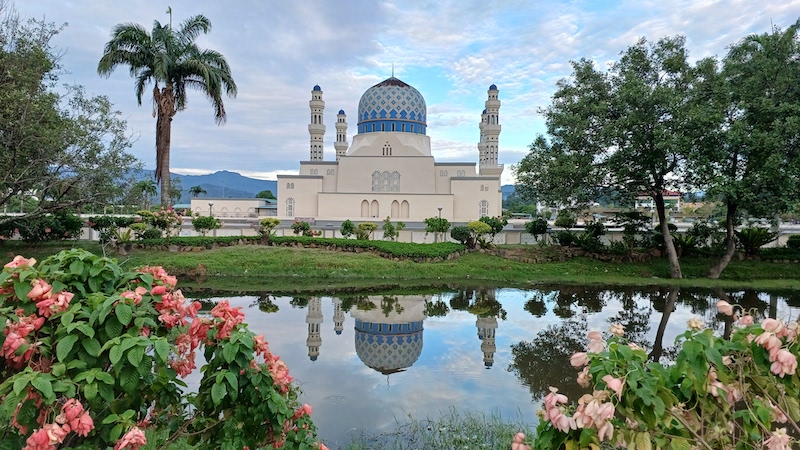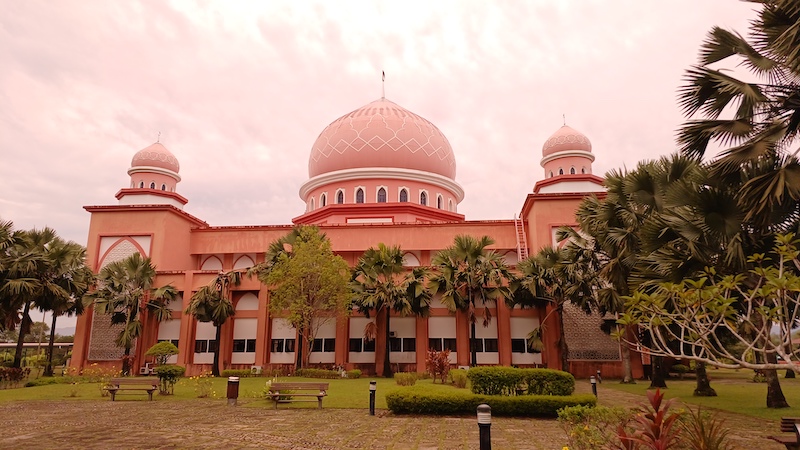Kota Kinabalu: I Flew to Borneo Last July and Boy Are My Arms Tired Kota Kinabalu
By William Urbanski
As a young man in Canada, nothing was more riveting, nothing was more important than the first season of the TV show Survivor. It was a cultural phenomenon, uniting people around the globe in their desire to see who would emerge victorious after the final tribal council. One of the fondest memories of my youth was huddling around the television with about ten other people one summer evening to watch Richard Hatch claim the million-dollar grand prize.
That first season of Survivor took place in Borneo, and I knew it was a place that, sooner or later, I would have to visit. This past summer, that dream came true, and unlike the later seasons of Survivor, Borneo did not disappoint.
Getting There
Kota Kinabalu (or simply “KK”) is a city of about half a million people located in the northwest of the massive island of Borneo. Borneo itself is actually divided into three countries: Malaysia, Indonesia and the tiny nation of Brunei, with the Malaysian part occupying roughly the northernmost twenty percent of the island.
Of course, it is possible to travel to KK via Incheon, but for this trip, my wife and I decided to test our luck with the Gimhae Airport (just outside of Busan), since we have grown tired of the unabashed rigamarole of the U-Square airport bus. Taking the car to Gimhae Airport worked well enough, but it was a pretty hard three-hour drive. On top of that, unlike at Muan Airport, parking is not free, so keep that in mind. While taking the car to the airport offers the advantages of, well, taking the car to the airport, I would not go so far as to say it was less stressful than bussing it to Incheon.
Grab a SIM Card, Then Grab a Grab
After the five-hour flight to KK, the first thing you will want to do after clearing customs is to get a SIM card with a phone number. There are several stores on the arrival floor that sell SIM cards for a very reasonable price. I got a card for 35 ringgit (about 10,000 won) from a company called “Digi” which gave me unlimited calling and a completely ridiculous 30 GB of data. Who would use that much data on a week-long holiday is beyond me, but whatever.
The reason it is essential to get a SIM card with a phone number is that it is needed to sign up for the incredibly convenient and intuitive Grab app. Grab is basically the Uber of Southeast Asia and, in fact, a few years ago, Grab bought out Uber in the region. Another way to think of Grab is that it is the super-app Elon Musk wishes his newfangled and newly rebranded “X” app could be.
Basically, nobody uses taxis in KK, and with how easy, fast, cheap, and all-around amazing Grab is, it is easy to see why. It takes less than five minutes to download and set up the app then, in terms of getting around, you have it made in the shade.
I do not want to get off topic here, but in my opinion, Korea would be better off with Grab, and it is a shame that so far e-hailing services like it and Uber have been blocked. A story for another day, I suppose.
On a final note, while I am fundamentally opposed to tipping, I would say it is a good idea to go right ahead and throw your Grab driver and extra couple of ringgit at the end of every ride. It is a couple cents to you, but the drivers really appreciate it, especially when a ride across town only costs two or three bucks.

Gaya Street Sunday Market
There is so much to see and do around KK, but since we had the good fortune to arrive early Sunday morning, checking out the Gaya Street Sunday Market worked out great. From 6:00 a.m. until 1:00 p.m., Gaya Street gets blocked off so that vendors can set up booths and sell all sorts of clothes, food, and crafts. The atmosphere was lively, music was playing, and best of all, there was a great ice cream truck. This market is right downtown and close to the waterfront, so spending a few hours there is definitely worth it.

Blue and Pink Mosques
Malaysia is predominantly a Muslim country, so it is no surprise that KK has a couple of absolutely phenomenal mosques. We first visited the Blue Mosque, which is surrounded by a moat, giving it the moniker “the floating mosque.” When the moat fills up during the rainy season, it creates the illusion of the edifice sitting right on the water. We arrived a bit late (the mosque closes to visitors at 5:00 p.m.) and were not allowed to enter onto the grounds but were still able to get a great view from the road.

The Pink Mosque, officially known as the University Malaysia Sabah Mosque, was even more brilliant in my opinion. The color and surroundings made it a great place to take copious selfies or just enjoy the atmosphere. A word of warning though: If you are staying downtown and take a Grab to visit the Pink Mosque, make sure you stay off the road around 9:00 a.m. and 4:00 p.m. The university campus is a few kilometers north of the city center, and traffic during rush hours is absolutely bonkers. You have been warned.
There are modest admission fees for each of these mosques, and also keep in mind that if you are interested in actually entering the buildings, you must be wearing appropriate clothing (which appeared to be available to rent).

Island Life
To visit KK without spending some time on the islands just off shore would be a total and complete shame. While there are countless tour companies offering “all in” tours, it is easy enough to head over to Jesselton Point Ferry Terminal and make your own arrangements. Boats for the islands leave frequently in the morning, but I would really suggest getting there before 8:00 a.m. because the terminal is one of the most hectic and chaotic places I have been in years. As well, whatever you do, do not buy a ticket from Titong, which is by far the worst-managed boat company in the history of maritime navigation.
Anyway, as long as you did not buy a ticket from Titong, eventually you will get on a boat and be whisked away to island paradise for the day. We visited the islands for Sapi and Manukan for one day each. Sapi was beautiful, but Manukan was the absolutely stunning, beautiful, jaw-dropping, idyllic beach fantasy from my dreams – every bit as good as my younger self had hoped when watching Survivor in the year 2000.
Boats leave the island every hour on the hour, and while looking for your boat, you can expect the same confusion and jostling that has made Jesselton Point Ferry Terminal the subject of recurring nightmares worldwide.
Final Travel Tips and Closing Thoughts
Things in KK generally do not cost that much, so if at all possible, try to get some smaller bills. For example, trying to break a 100-ringgit bill (about 30,000 won) on a couple of mango juices will probably be difficult for the vendor.
Most of the Grab drivers and locals (especially vendors) speak excellent English, but it was also a pleasant surprise to find out how many people knew a few phrases in Korean! This is of course due to the millions of Koreans who visit KK every year.
Even if you are one of the seven or eight people on earth who have no interest in Survivor, KK is still a great place to visit and a gateway to the rest of Borneo. Just remember to bring lots of sunscreen.
The Author
William Urbanski tries to visit a new country every year. When he is not working for the Gwangju News, he can be found at home watching clips of Survivor on YouTube.



